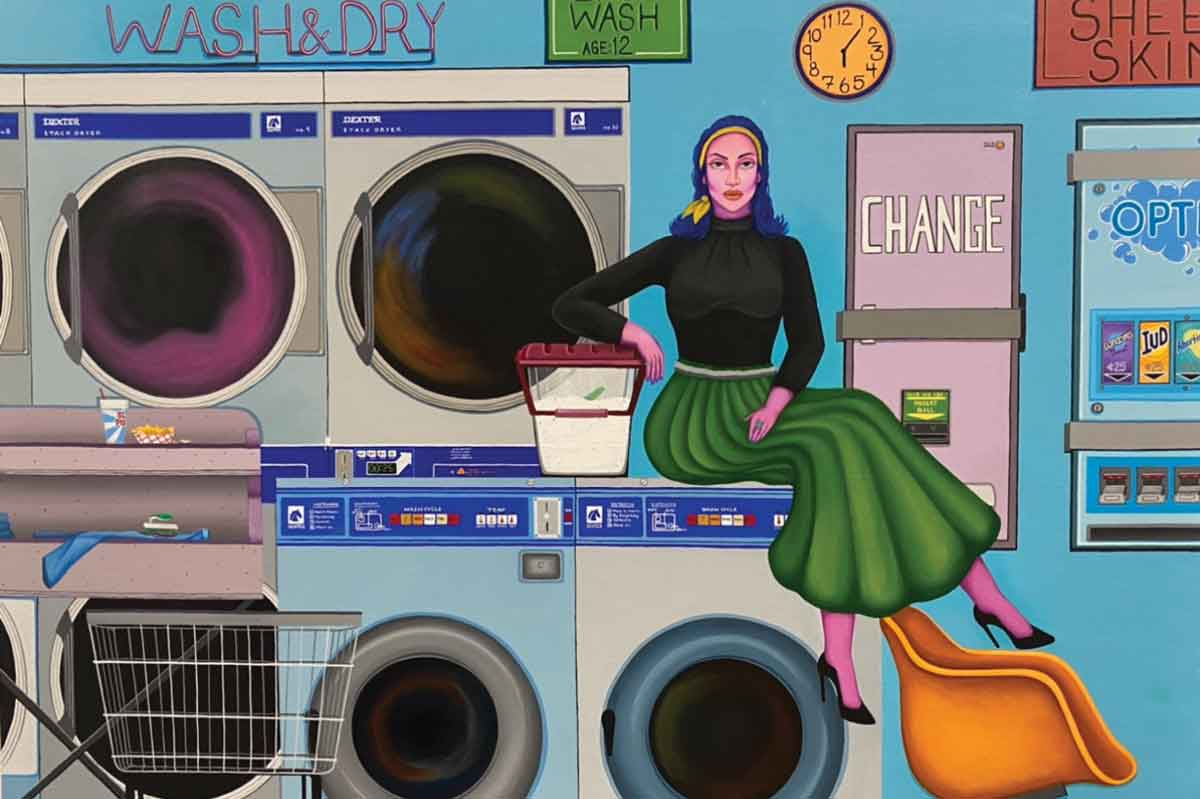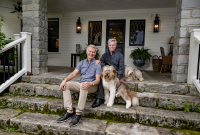Art Basel brings indigenous work to Miami Beach
 Robyn Tsinnajinnie “Cold Water” 2022.
Robyn Tsinnajinnie “Cold Water” 2022.
Throughout the ages, art has given us a means to display all facets of our lives to the world; it can be therapy, an outlet, activism in both still life and performance.
There’s a multitude of immeasurable ways humans can express what we bear witness to.
Native art has always been a part of my life. I grew up with my immediate and extended family — who are Cloverdale Pomo and Blackfoot — at school, work, and yet when I step outside that familiar space, I find that indigenous art is only a minor aspect of many communities. So, I set a goal while attending this year’s Art Basel in Miami Beach, Florida, to find indigenous representation amid the art week chaos.
Art week is not just one show, but several fairs and events all over the area, so I needed to keep my search direct, knowing well that the representation would be severely lacking. This is not a small-town art market; between all the fairs there billions of dollars are spent in a short period. However, I found it interesting that of the roughly 4,000 artists represented by 280 galleries from around the world, only one — K. Art — is native-owned and represents exclusively native artists.
The buzz surrounding the gallery and my curiosity made this my first stop while meandering among the sea of Euro-centric discord. Upon arriving, I immediately saw work by Edgar Heap of Birds (Cheyenne and Arapaho), Roybn Tsinnajinnie (Diné /Navajo) and Erin Gingrich (Koyukon Athabaskan and Inupiaq). I was completely engrossed by the pieces and the stories behind them. There was no hesitation diving right into a discussion, speaking with satirical humor about serious topics and environmental work the artists were producing.

Related Items
- Luzene Hill “To Rise and Begin Again” 2022
Mentioned in this discussion was an artist whose work has had a profound impact on me. Luzene Hill (Eastern Band of Cherokee Indians) is a conceptual artist who lives in Atlanta. Her piece “To Rise and Begin Again” (2022) was shown at this year’s Amory Show in New York. The sculpture is made up of aluminum columns varying in size with the Cherokee syllabary atop each column. The columns are set to resemble New York City skyscrapers referencing the indigenous ironworkers that contributed to the construction of the iconic skyline. As the columns vary in height with the syllabary placed atop, this represents the growth and decline of the Cherokee language. Luzenes Hill’s current and past works continue to shine a light on pertinent topics that not only focus on Cherokee stories and concerns, but also the experiences that affect native communities across the country.
Next stop was Wynwood. My old hangouts drastically changed over the years, but the artists’ dedication is still fully present. Over the last couple of decades, graffiti artists and muralists from all over the world have traveled to Miami yearly to paint and relay their messages, messages that are also presented by a myriad of Indigenous artist, more than any art fair in Miami. Each style is represented, and each is the accumulation of years of lives lived. Whether it’s blockbusters or wildstyles, heaven-spots and murals, a strong social message can be found. Muralist Cranio, Fabio Flop, Craig Anthony Miller, Carlos Rodriguez (CarlosRMK), Grow Love, and so many others stood out in such a profound way making a powerful impact on an already giant platform.

- Grow Love and Taylor Hertzog Colab Wynwood MuralFest 2022
I grew up around a lot of street artists and know the positive impact they provide that is crucial to burgeoning communities and movements. This fall, I was thrilled to see the success of a local project that started in Western North Carolina. The Indigenous Walls Project curates murals and events throughout the year in Asheville that focus on Indigenous languages and traditions, leading the community surrounding this endeavor to start up conversations. This is done by providing space for native artists to showcase their work along with using public forums to open discussions with the community.
Anyone interested in seeing work from Luzene Hill, her piece, “Disruption,” can be seen at the Museum of the Cherokee Indian, which will be showing until September 2023. The Indigenous Walls Project murals can be found throughout Asheville. Be sure to check their social media handles for mural locations and artists’ information.









